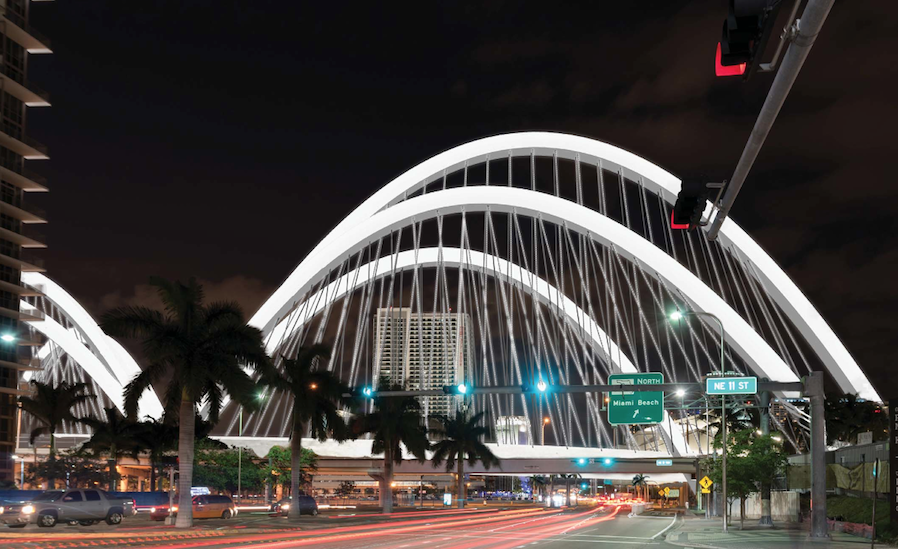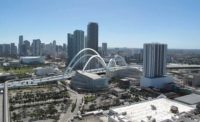Infrastructure
Florida Bridge Award Thrown Into Doubt by Opposition
Miami lines up against state in a best-value selection process decided by less than a point

The selection process for an $800-million Miami bridge is coming under fire amid allegations that state officials gamed a best-value scoring system that they had agreed should give more weight to aesthetics.
The Florida Dept. of Transportation recently announced plans to award the contract for the reconstruction of a key piece of I-395 in Miami – including a “signature bridge” over Biscayne Boulevard – to a joint venture of Archer Western and The de Moya Group.
 |
| A rendering of the most-highly ranked proposal for a new I-395 Bridge in Miami. |
But since announcing the award in early May, state transportation officials have been besieged with criticism from local civic and political leaders arguing the scoring system was tilted in favor of the Archer Western/de Moya proposal, which in a scoring system that provided for a maximum of 90 points won by a half point.
Led by former Miami Commissioner Marc Sarnoff, critics contend this violated an earlier, 2013 agreement when FDOT officials, facing a lawsuit, agreed to give significant weight to aesthetics and the concept of a signature bridge. State officials had in 2013 considered more mundane and less costly bridge design options.
 |
| A rendering of the proposed new I-395 Bridge prepared by a team led by Fluor. |
“It’s supposed to right an old wrong by allowing the local community to make its own choice about a design that will become an enduring icon of Miami,” Sarnoff wrote in an op-ed in the Miami Herald. “Instead, state bureaucrats pulled a fast one with FDOT math that made the work and voice of our local community representatives meaningless.”
State officials did not immediately respond to the criticism or allegations by Sarnoff.
(See related commentary: What If They Call a Do-over On The I-395 Project?)
The aim of the proposed bridge and highway reconstruction project is to replace a low-slung, 1960s-era expressway cut through the Overtown neighborhood in downtown Miami. The new bridge and associated roadwork is expected to open up acres of land for parks and other public uses while helping reconnect the neighborhood.
Archer Western/de Moya’s winning bid features a six-arched suspension bridge designed to give the appearance of a fountain of water gushing forth over Biscayne Boulevard.
However, the clear favorite of a committee of four community representatives charged with scoring plans on aesthetic grounds was the design by the second-place bidding group. Critics contend Fluor-Astaldi-MCM’s design – a pair of support pylons resembling dancers in a pas de deux that plays off the nearby Arsht Center for the Performing Arts - does a better job of fulfilling promises by local and state officials for a bridge that would stand out architecturally.
In particular, critics contend that FDOT had agreed to give equal weight to the scores awarded by two panels, an aesthetics committee made up mainly of community representatives with a technical committee composed of agency engineers.
Instead, when it came time to review the bids, the votes of the four community representatives who strongly favored the Fluor proposal were given votes far less less weight than those of the FDOT engineers, who wanted the Archer Western/de Moya plan, critics contend.
According to bidding documents released by the state, the panel of engineers that weighed the technical merits of the different proposals was allowed to award up to 60 points.
By contrast, the panel with community representatives that reviewed the aesthetics of the different bridge plans could award half that, or up to 30 points.




